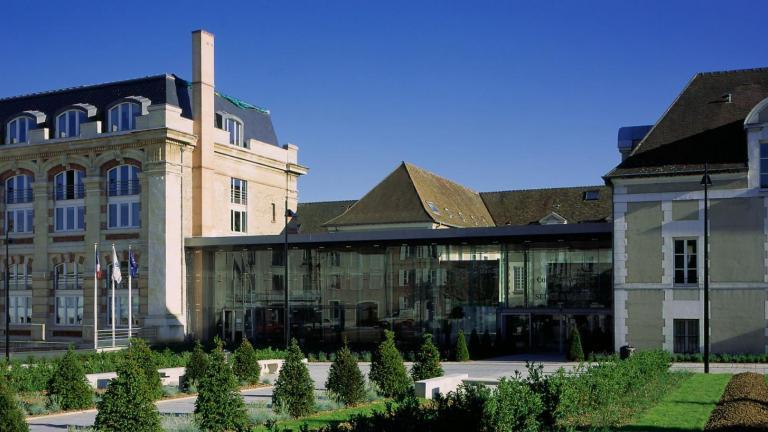Addresses and useful contacts
Our sites in Seine-et-Marne
During the history of the Seine-et-Marne department, which recently celebrated its 230th anniversary, the Seine-et-Marne territory was among the sites where Napoleon I made his mark, notably in Fontainebleau, where he stayed and took a number of decisions. As part of the bicentenary of the death of Napoleon I, the Department of Seine-et-Marne is partnering with the event.
Practical information:
- Hôtel du Département, 12 rue des Saints-Pères, 77000 Melun
- Opening hours: 8 am to 6 pm Monday to Friday
- Contact: +33 (0)1 64 14 77 77
The Seine-et-Marne Department Archives are part of the Department and their primary mission is to preserve the collective memory of Seine-et-Marne. The Department Archives offer a number of useful services for all residents, including access to the civil register, to parish registers and to land registry documents. There are numerous archive documents bearing witness to Napoleon's stay in Seine-et-Marne, notably in Fontainebleau.
Practical information:
- 248, avenue Charles Prieur, 77190 Dammarie-lès-Lys;
- Opening hours: from 9 am to 5 pm on Mondays, Tuesdays and Thursdays, by appointment;
- Contact: +33 (0)1 64 87 37 17 or by sending an email to this address.
Fontainebleau is not the palace of one sovereign, it is the palace of each one of them, handed down from generation to generation from the Middle Ages to the 19th century. While the medieval origins of the Château are still visible thanks to the old dungeon, Francis I was the one who ordered spectacular developments.
His successors continued his work: it was Henri IV's favourite palace, renewing with an era of splendour, and the birth of the future Louis XIII in the king's apartment would establish it as the cradle of the Bourbon dynasty. A young Louis XIV would assert his absolute power there, while Louis XVI would create enchanting getaway areas.
Fontainebleau, which became an imperial palace after the Revolution, bears witness to Napoleon I's refurbishments and preserves, among other things, the only remaining Napoleonic throne room. Fontainebleau became a place of captivity for Pope Pius VII between 1812 and 1814, and it was the scene of the collapse of the First Empire in April 1814. The palace was the scene of Napoleon I’s abdication on 4th and 6th April and, following his famous farewell speech to his old guard in the Cour d'Honneur, he went into exile on the island of Elba.
Practical information:
- Place du Général de Gaulle, 77300 Fontainebleau;
- Opening hours: open every day from 9.30 am to 5 pm except Tuesdays;
Fontainebleau benefited from the construction of the palace and the visits of the kings. Over the centuries, embellishment works were carried out as the Kings' Court would come and go. It was actually in the Château de Fontainebleau that Louis XV and Marie Leszczynska got married in 1725.
Practical information:
- 40 rue Grande, 77300 Fontainebleau;
- Contact +33 (0)1 60 74 64 64.
The Château du Martroy, which is listed in the Supplementary Inventory of Historical Monuments, was built during the "Age of Enlightenment" on the foundations of a 16th-century estate, and was then extended during the 19th century. The current owner is a descendant of many leading figures alongside Napoleon I: Armand de Caulaincourt, Pierre Daru, Louis Nicolas Davout d'Auerstaedt, Jean-Baptiste de Champagny.
Practical information:
- 2 rue François Daru, 77124 Chauconin-Neufmontiers
- Contact by phoning +33(0)6 22 91 69 93 or by sending an e-mail to this address.

